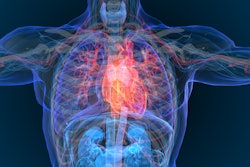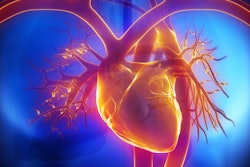Photon-counting CT (PCCT) technology has the potential to revolutionize cardiac imaging, according to a presentation delivered July 20 at the Society for Cardiovascular Computed Tomography (SCCT) annual meeting in Washington, DC.
"The main use of coronary CT will be in preventive cardiology -- in addition to acting as a gatekeeper to interventional cardiology," said presenter U. Joseph Schoepf, MD, of Medical University of South Carolina (MUSC) in Charleston.
Cardiac CT has finally become a first-line test for imaging the heart across a variety of indications. It carries a relatively low radiation dose and can illuminate a patient's plaque burden and any calcium blooming (artifacts caused by calcifications that can lead to an underestimation of the coronary artery lumen size); it can also visualize stents. It may also offer a way to measure coronary stenosis beyond using coronary artery calcium (CAC) scoring and improve the visualization of calcified plaque compared with invasive coronary angiography (ICA).
And it doesn't hurt that PCCT used for cardiac imaging appears to lower the Coronary Artery Disease Reporting and Data System (CAD-RADS) class in more than 50% of patients, Schoepf noted.
 U. Joseph Schoepf, MD.
U. Joseph Schoepf, MD.
On the clinical side, PCCT reduces the rate of ICA referrals compared with conventional CT using a whole-heart coverage energy-integrating detector (EID) and appears to produce higher-resolution images of coronary stents.
It is time to rethink cardiac imaging with [PCCT], but there's more to be determined, Schoepf said. The reference standard for noninvasive cardiovascular imaging has yet to be established, developing the technology so that it produces high negative and positive predictive values, assessing the cost of using it in a busy radiology department, and evaluating whether it is actually clinically useful for disease prognosis or outcomes remain to be established.
In any case, Schoepf offered a few "visions for cardiovascular imaging" that could come to pass between now and 2040:
- Coronary CT angiography will be totally automated and will include estimates of coronary flow and pressure gradients.
- The main use of coronary CT will be in preventive cardiology (rather than as a gatekeep to interventional cardiology).
- PCCT will replace conventional CT for coronary artery evaluation.
- PCCT will enable routine plaque characterization and quantification.
- Next-generation cardiac CT will become more like MRI.
"We are there, with PCCT replacing the need for invasive catheterization in many clinical scenarios," Schoepf said. "Nuclear cardiology is merely a faint afterthought. What's missing are refined standardizations and large-scale studies establishing the powers of cardiac CT for patient outcome and disease prevention."



















